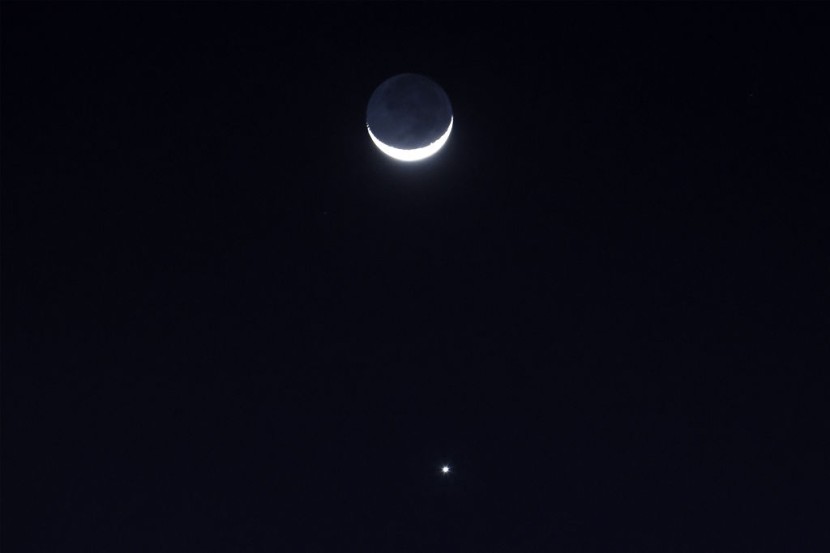
The moon and Venus, otherwise known as the "Evening Star," will snuggle up together on early Tuesday morning in an event that astronomers call a conjunction.
The cosmic pairing is possible because the two celestial bodies will share the same right ascension. This particular scenery will be visible to early risers as experts anticipate it would likely unfold at around 3:00 a.m. for people in New York City.
Moon and Venus Snuggle
Astronomers note that the waning crescent moon will be up at around 2:44 a.m. while Venus will rise at around 3:11 a.m. The special arrangement is a precursor to a unique solar eclipse that has been nicknamed the "Ring of Fire" that would be visible from Oregon to Texas on Saturday.
The cosmic pairing between Venus and the moon will not be visible through a telescope but people can use binoculars with a wider field of view to watch the cosmic spectacle. During the event, Venus will rise in conjunction with Regulus, which is the "heart of the lion" star and is the brightest in the zodiacal constellation Leo, as per the New York Post.
Experts also noted that the moon will have just left its apogee, which is the point in its orbit where it is farthest from the Earth. It was also said that on Oct. 10, Venus and Regulus will be visible and will be roughly 252,000 miles away from our planet and the Evening Star will be at a spot that is only a few light-minutes away while Regulus will be 79 light-years away.
During the moon and Venus' conjunction, the two celestial bodies will be in the constellation Leo and they will both have a right ascension of 10h09m00s at the exact moment of conjunction. The moon will have a declination of 16 degrees, 4 minutes N and Venus will have a declination of 9 degrees, 35 minutes N.
Scientists said that the lunar face will be just 10% illuminated during the close approach to Venus and it will have a magnitude of roughly -10.6. The minus prefix indicates a bright object over Earth. On the other hand, the Evening Star will have a magnitude of roughly -4.5 on Tuesday morning.
Spectacular Cosmic Pairing
Despite the cosmic spectacle being a close approach, the two celestial bodies will still be too widely separated to be visible together when looking through a telescope's narrow field of view. Additionally, while Venus is only the second planet from the sun, it is our solar system's hottest body, having a surface temperature that is hot enough to melt lead, according to Space.
It would also be possible for viewers to observe a couple of bright stars around the crescent moon and Venus. Regulus is the 21st-brightest star in the sky and is the head and front of the lion in the constellation Leo, which resembles a backward question mark.
There are six stars in the sickle-shaped constellation, with Regulus being located at the bottom of the pack. The fourth star, which is visible on the other side of the crescent moon, is Algieba, which is located roughly 130 light-years from our solar system and is one of the clearest double stars in the night sky, said Live Science.








